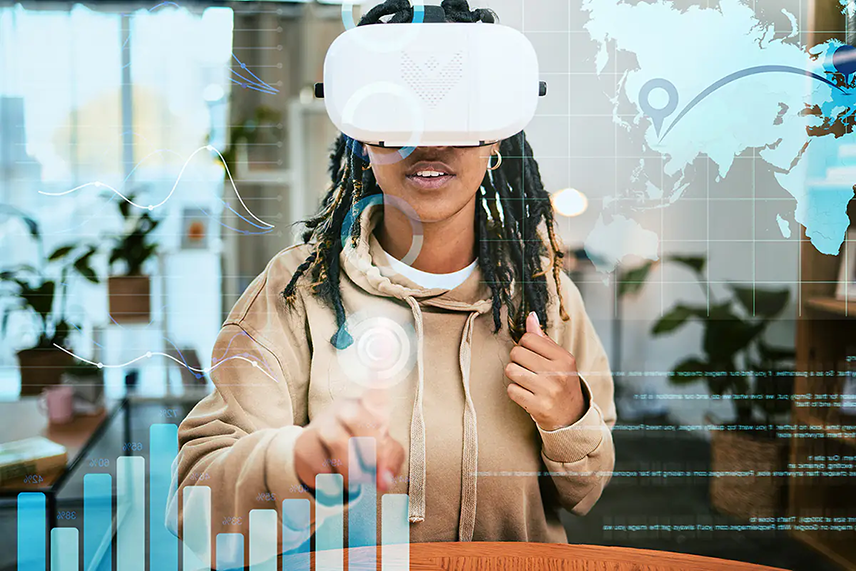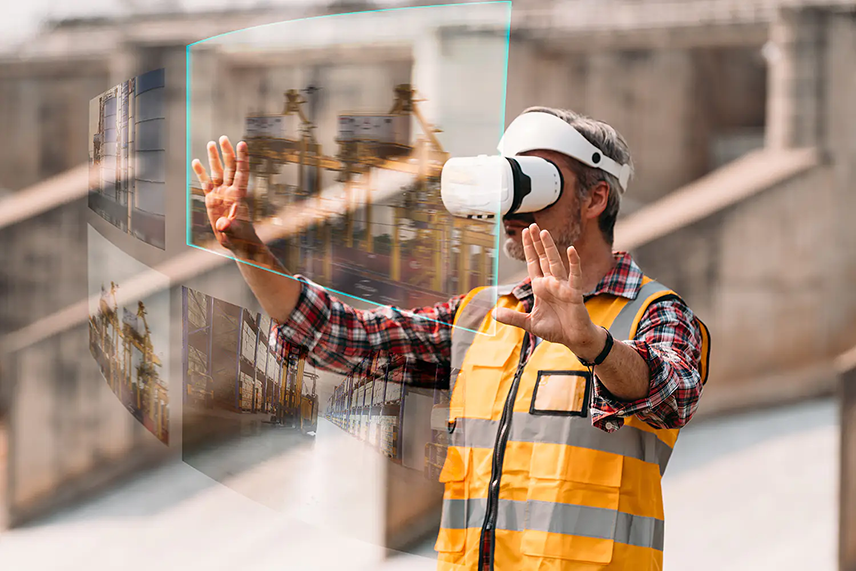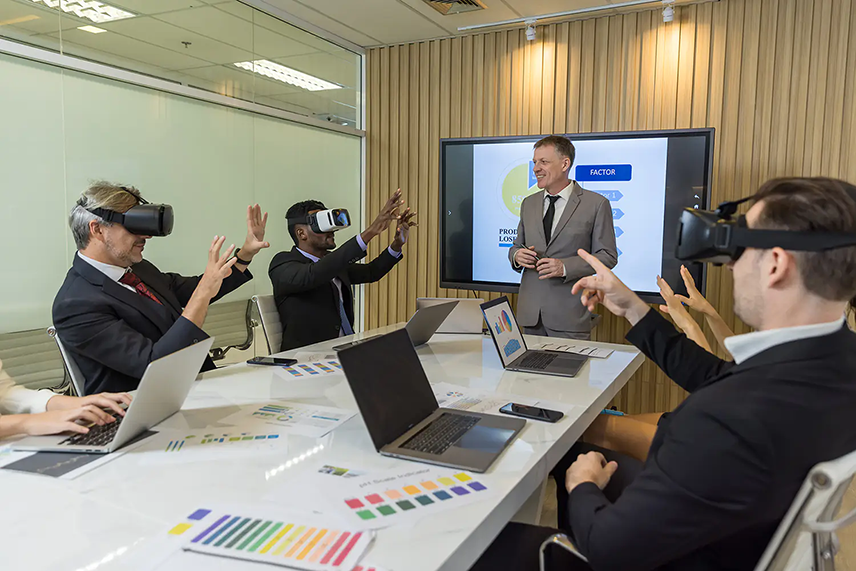
Many organizations today have a need to know how to create online training courses to drive the best learning results and business outcomes. Online training courses have become increasingly popular over the years, with more companies opting for virtual training over traditional classroom sessions.
While online training courses offer several advantages, including convenience, cost-effectiveness, and accessibility, they often lack the interactivity and engagement that in-person training provides. This is where virtual reality and augmented reality training courses come in, as they offer a more immersive and engaging experience to learners. Experts say the future of learning will be led by immersive experiences with AR/VR.
“According to MarketsandMarkets, the global market for VR and AR in education is expected to reach $19.6 billion by 2023, with a compound annual growth rate of 16.2% for the forecast period 2018-2023.”
This suggests that the demand for AR/VR training and education is only going to increase in the coming years.
6 Best Practices to Create Online Training Courses with VR and AR Tech
1. Define Your Learning Objectives
Before creating any online training course, it’s crucial to define your learning objectives. This means identifying what you want your learners to achieve by the time they complete the course. With VR and AR, you can create a more immersive experience, but it’s important to ensure that the technology is used to support the learning objectives and not distract from them.

2. Incorporate Interactive Elements
Implementing online AR/VR training courses allows for a more interactive and engaging experience. Rather than simply watching videos or reading text, learners can actively participate in simulations and scenarios. Incorporating interactive elements like quizzes, games, and simulations can improve engagement and retention rates.
As per a study by the University of Maryland, students who learned using VR had an 8.8% improvement in retention compared to traditional learning methods. This suggests that incorporating interactive elements into online training courses can lead to better learning outcomes.
3. Ensure Accessibility
While VR and AR can be great tools for online training, it’s important to ensure that they are accessible to all learners. This means considering factors such as disabilities, language barriers, and access to the necessary technology. Providing alternative options for learners who may not have access to VR and AR tech can help ensure that everyone can participate in the training.
4. Provide Clear Instructions
VR and AR tech can be intimidating for some learners, especially those who may not be familiar with the technology. With clear instructions on how to use the technology, any anxiety or confusion can be reduced, and learners can focus on the training content. This can be done through video tutorials or step-by-step guides.

5. Incorporate Real-Life Scenarios
One of the benefits of implementing online AR/VR training courses is that learners can experience real-life scenarios in a safe and controlled environment. This can be especially useful for training in high-risk industries, such as healthcare and construction. By incorporating realistic scenarios, learners can develop their skills and knowledge in a practical and engaging way.
This suggests that using real-life scenarios in AR/VR training can lead to better learning outcomes and improved confidence.
6. Test and Evaluate
Like with any training course, it’s important to test and evaluate the effectiveness of the training. This can be done through surveys, feedback forms, and assessments. Evaluating the training can help identify areas that need improvement and ensure that the learning objectives are being met.
A study by Deloitte found that 78% of companies believe that VR and AR will become mainstream in their organization within three years. This suggests that VR and AR are here to stay and will become an integral part of online training in the coming years.
It is also interesting to understand the applications of VR and AR tech in workforce learning and education. These technologies have the potential to revolutionize workforce development and education, providing learners with immersive and engaging experiences that are more effective than traditional training methods.
VR and AR Applications in Workforce Development and Education
1. Simulations and Training
VR and AR can be used to create realistic simulations and training environments that allow learners to practice skills and procedures in a safe and controlled environment. For example, healthcare professionals can use VR simulations to practice surgical procedures, while factory workers can use AR to learn how to operate machinery.
2. Remote Learning
VR and AR can offer remote learning experiences, enabling learners to participate in virtual classrooms and training sessions from anywhere in the world. This can be particularly useful for learners who can’t attend in-person sessions due to distance or scheduling constraints.

3. Onboarding and Orientation
VR and AR can be used to provide immersive onboarding and orientation experiences for new employees. This can help them quickly familiarize themselves with their new work environment and become more productive and effective in their roles.
4. Soft Skills Training
VR and AR can be used to provide training in soft skills such as communication, collaboration, and leadership. These skills are essential for success in the workplace. VR and AR can provide learners with realistic scenarios to develop and practice these skills.
5. Job Shadowing
VR and AR can provide learners with virtual job shadowing experiences, allowing them to observe and learn from experienced professionals in their field. This can be particularly useful for learners who are unable to participate in in-person job shadowing due to scheduling or other constraints.
Conclusion
AR/VR training courses have several advantages over traditional online training courses, including improved engagement rate, retention rate, training completion rate, and confidence. By following the best practices and incorporating VR and AR tech into online training courses, organizations can create a more engaging, effective learning experience. This can in turn help them better meet the learning needs of their employees.
However, it’s important to note that VR and AR are relatively new technologies, and there are still some limitations and challenges that need to be addressed. For example, the cost of the technology can be a barrier for some organizations, and not all learners may have access to the necessary equipment or internet speed to use VR and AR.
It’s also important to ensure that the technology is used appropriately and not as a gimmick, as this can lead to a distraction from the learning objectives. If you want to learn more about how to create online training courses using VR and AR or develop AR/VR training courses, reach out to our eLearning experts at contact@harbingergroup.com.






